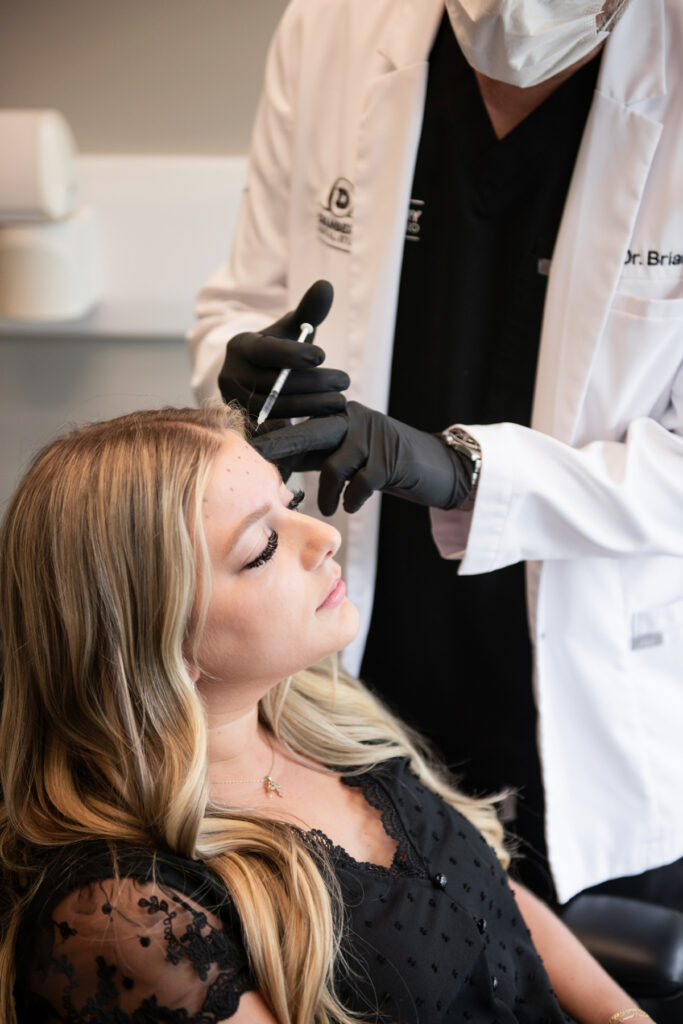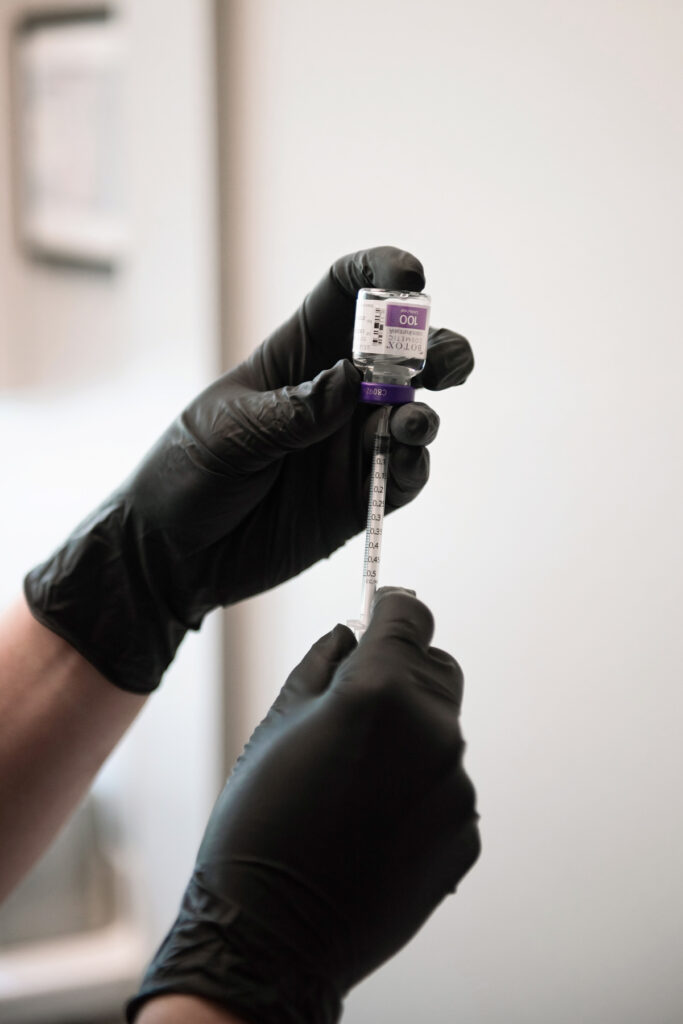AAFE Members
As active members of the American Academy of Facial Esthetics Dr. Brian and Dr. Rob are experts in the placement and use of Botox and dermal fillers.
Treatment Options
Through their continued education and experience, Dr. Brian and Dr. Rob provide both cosmetic and therapeutic treatments.
Qualified Expertise
Both Dr. Brian and Dr. Rob have educational backgrounds in cosmetic and neuromuscular dentistry. When you choose Cranberry Dental Studio, you receive world-class treatment.

Reduce Wrinkles with Cosmetic Botox
Botox works by reducing the muscle’s ability to contract, which causes the overlying wrinkles in the skin to disappear. These types of wrinkles are known as dynamic wrinkles. Dynamic wrinkles result from the contraction of the underlying muscle in your face over time.
With the help of Botox, our patients are able to decrease the appearance of forehead lines, frown lines, crow’s feet, and ‘water bottle lines’ around the mouth. Dr. Brian and Dr. Rob are also able use Botox to drop the upper lip, effectively treating ‘gummy’ smiles.
Interested in learning more about Botox treatment? Contact us for more information!
Relieve Pain with Therapeutic Botox
At Cranberry Dental Studio, we are proud to offer therapeutic Botox to treat patients with chronic migraines as well as patients who struggle with clenching or grinding.
In most cases, symptoms of chronic migraine, tension headaches, and neck pain arise directly from the muscle. Often, the same muscles that control the bite also generate headaches and pain from compression of the TMJ. Any problem that results from muscle pain or tension benefits from efforts to calm that muscle down. With the help of Botox, these muscles can be calmed to relieve painful symptoms.
Botox relaxes the muscle by decreasing its ability to contract. Targeting muscle groups that are the source of the problem is an effective way to alleviate chronic pain symptoms as well as limit the amount of force a muscle can produce.
For comprehensive treatment, Cranberry Dental Studio recommends regular treatment every 12 weeks. Research suggests that over time you can decrease the quantity or frequency of treatment over time while maintaining the same results.
Have you been struggling with TMJ related pain? Find out if Botox can help!


(Including Juvederm Ultra XC, Juvederm Volbella, and Juvederm Voluma)
Rejuvenate with Dermal Fillers
Static wrinkles—unlike dynamic wrinkles—are not related to the underlying muscle. Over time, they arise from a loss of volume in the tissues below the skin. These types of wrinkles are effectively and safely treated using dermal fillers.
The most commonly treated types static of wrinkles include:
- Nasolabial folds – Wrinkle lines that connect the side of your nose to the corner of your mouth
- Marionette lines – Wrinkle lines extending downward from the corners of your mouth to around your chin
Dermal fillers are also used to enhance the appearance of the lips—further improving your smile! Dr. Brian and Dr. Rob take special pride in using dermal fillers to symmetrically volumize the lips.
Our office uses a variety of dermal fillers, including Voluma, Juvederm Ultra Plus XC, Juvederm Ultra XC, and Belotero Balance. During your consultation, the doctors will help you select which product will provide you with the best possible results. By taking all aspects of smile design into consideration with their knowledge of proper smile and lip lines, our doctors can create the smile you’ve been looking for.
Frequently Asked Questions
A consultation with a cosmetic dentist is the best way to determine if Botox or fillers are the right choices for you. At Cranberry Dental Studio, we evaluate your individual needs, discuss your goals, and recommend the most suitable treatment plan to achieve the desired results.
The results of Botox can usually be seen within 3 to 7 days after the treatment, while the effects of fillers are typically visible immediately after the injection. It may take up to two weeks for the full results to become apparent as any swelling subsides.
The cost of Botox and fillers can vary depending on factors such as the provider’s expertise, the geographic location of the office, and the amount of product used. It’s essential to consult with your cosmetic dentist for a personalized quote based on your specific needs.
Both Botox and fillers are considered safe and effective when professionally administered. However, some side effects may occur, including redness, swelling, bruising, or mild discomfort at the injection site. Side effects are usually temporary and resolve within a few days.
The results of Botox typically last between 3 to 6 months, while the effects of fillers can last anywhere from 6 to 18 months. Individual results may vary and regular maintenance is often necessary to maintain the desired appearance.
Botox is a neuromodulator that works by temporarily relaxing the facial muscles responsible for wrinkles and fine lines. Fillers, on the other hand, are gel-like substances that are injected beneath the skin to restore volume and fill in wrinkles, giving the face a refreshed look.



